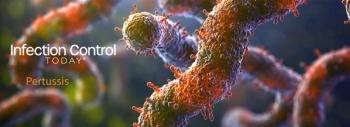
If You Are Immunocompromised, Do Not Despair: Plan and Prepare for Medical Care
Immunocompromised patients face heightened risks during medical visits. To ensure safer health care appointments, prepare by understanding COVID-19 transmission, masking, ventilation, and exposure.
One of the most dangerous challenges individuals can undertake is climbing Mt Everest; here, one is pitted against the fury of nature, and many are unable to navigate the journey and return home safely. But for an immunocompromised transplant patient, such challenges occur every day and are unavoidable. One of the highest and
Like any dangerous expedition, safety is not guaranteed, but preparation and planning can significantly increase the likelihood of a safe journey. Dosage and exposure time to the COVID-19 virus are of the utmost importance. Remember, this virus is airborne, which can be spread by talking, singing, and coughing. Indoors, there is no safe distance;
First, the many types of medical visits each pose unique challenges. The most problematic are emergencies when there is little time to plan. The least problematic are elective medical visits, where you can seek out the safest environment and negotiate treatment conditions before you arrive.
Calling ahead is crucial. One needs to know the providers’ masking policy, the in-office wait times, and how to complete paperwork online before the visit. The latter is important to decrease one’s exposure in patient waiting areas.
Masks: Masking is essential. Unfortunately, the virus can enter through your nose, mouth, and eyes.
Overall,
Before your appointment, ask if all health care workers will wear N95 masks or respirators and if other patients must wear them. Often, the provider will say they do have a masking policy and that “masks are optional.” This is code for “no masking policy.” Be sure to bring several N95s with you to give to medical personnel, and you should wear a fresh, unused N95 mask.
Exposure Time: You should spend the least time in an office. Ask if you can be taken back to the examination room; if not, ask if you can wait in your car and be called in. Complete all paperwork online before the visit to minimize exposure to the main waiting area. Scheduling the first appointment in the morning is also an excellent way to minimize your time in the doctor’s facility.
Ventilation: The importance of ventilation cannot be overstated. Portable CO2 monitors can be used to measure ventilation adequacy and can be easily purchased on Amazon.
Spread by surfaces: Although the COVID-19 virus is mainly spread through the air, it can also spread via surfaces. As with preventing all types of infections, good hand hygiene is key. In addition, one should bring antibacterial (alcohol) wipes for surfaces you may come in contact with and bring plenty of hand sanitizer.
Vaccination:
Even after being vaccinated, an immunocompromised person may not produce an adequate immune response. If this is the case, it is best to have your antibodies measured after vaccination.
In addition, ask your doctor if you qualify to receive the new prophylactic antibody product,
Major Medical Procedures: If elective, try to schedule in May or June, when community rates of the virus are usually lower. In addition, the first procedure of the day may limit your time in the waiting area, and of course, you should have been boosted recently.
Attending needed medical visits is of the utmost importance. Instead of postponing, prepare and plan to make these visits as safe as possible.
(This article was presented at the Sept 26, 2024, American Association of Kidney Patients 49th Annual National Patient Meeting)
Newsletter
Stay prepared and protected with Infection Control Today's newsletter, delivering essential updates, best practices, and expert insights for infection preventionists.






